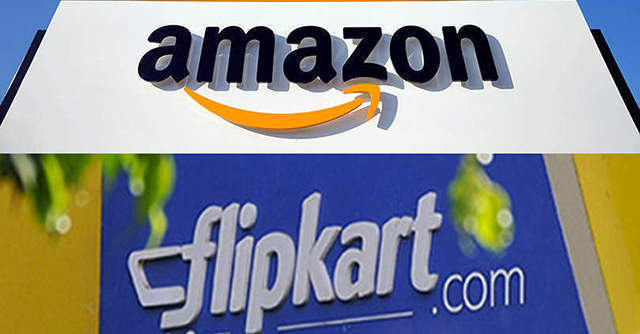
Small cities drive cracker of a sale for ecommerce firms


Festive season sales on ecommerce platforms Flipkart and Amazon have surpassed earlier records, driven by demand from customers in tier-2 cities and beyond.
Nearly 60% of the demand in the first three days of Flipkart’s Big Billion Days sale came from customers in tier-3 cities and rural towns, as per a statement. Additionally, tier-2 and tier-3 cities powered nearly half the sales on its fashion vertical Myntra, digital B2B marketplace Flipkart Wholesale and cash-and-carry Best Price.
In two days, sellers have already witnessed the same amount of growth that took six days the previous season, the company said. Over 70 sellers have sold goods worth Rs 1 crore, while 10,000 merchants clocked sales of over a lakh through the early access and three-day sale period, it said.

Sellers in the household products and personal care categories continue to see day-on-day growth during the six-day sale, the statement added.
The Walmart-owned company has over three lakh sellers on its marketplace, 60% of whom are from tier-2 and beyond. The company expanded the reach of its seller base by 20% this year, servicing about 3,000 pin codes.
For the period between September 1 and October 14, the company registered more than 36 million new app downloads, a majority of which came from smaller cities, the statement said.

On the other hand, rival Amazon said it saw more shoppers and sellers in the first two days of the six-day Great Indian Festival than it has for the same period during earlier sales.
Users from smaller cities made up 91% of its new customers, even as more than 66% of new Prime subscribers came from tier-2 and tier-3 towns, a company blog post said. Additionally, the Indian unit of the Jeff Bezos-run company received 66% of its orders from non-metros in the first two days of the sale.
“Over 1.1 lakh sellers receiving orders; 66% sellers, 91% of new customers, and 66% of new Prime sign-ups from small towns; shopping in 5 Indian languages; and orders from over 98.4% of India’s pin-codes in just 48 hours – it’s truly Bharat’s biggest celebration on Amazon ever,” Manish Tiwary, vice president of Amazon India, said.

The US retail giant’s largest sale event in India started on October 17, with early access on October 16 for Prime members. According to the company, over 5,000 merchants clocked sales worth Rs 10 lakh during the early access and first 48 hours of the sale. Most of the sales, it said, came from the smartphones, large appliances and consumer electronics categories.
Homegrown player Snapdeal operates in the same spaces as the ecommerce giants but runs a business model directed towards value-focused customers and smaller cities.
At 65%, the company said it witnessed the maximum orders for sellers beyond the top five metros on the first three days of the five-day sale.

New sellers from over 110 cities have debuted online this year, it said. Between July and September, it onboarded nearly 5,000 manufacturer-sellers from production hubs such as Meerut, Ludhiana, Tirupur, Jaipur, Panipat, Surat and Rajkot, it said. About 90% of orders from smaller cities will be shipped within 48 hours, it added.
“Ahead of Diwali, we had conducted an extensive outreach to onboard sellers from more than a hundred smaller cities, previously under-represented on India’s ecommerce map. We are gratified to see orders flow to these new sellers, all of whom, without exception, are very small enterprises," a Snapdeal spokesperson said.
"We believe this represents the second stage of ecommerce growth into Bharat -- from predominantly metro cities a few years to a growing connect with smaller cities starting nearly three years ago,” the spokesperson added.

Snapdeal claims to have more than 500,000 registered sellers with over 220 million listings on the marketplace. In a separate statement, the company said that its home category has grown 30% over last year to overtake the fashion vertical, even as the fitness category is up 45% year-on-year.
